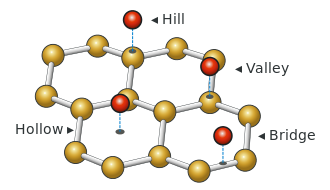Why Silicene Could Be The Key To Super-Fast Computing
February 6, 2015
Graphene is so 2004. Instead of making circuits out of atomically thick carbon when you can make them out of atomically thick silicon?
Kristopher Sturgis
|
Silicene image by Jojko Sivek. |
Researchers from the University of Texas have created the first transistor made of silicene, which is made up of a one-atom thick layer of silicon atoms.
Silicon atoms from crystalline molecular structure similar to that of graphene, opening up the potential for exceptional electronic properties with possible applications in nanoscale electronics. First developed in 2010, the material has proven difficult to produce and work with. An article from last year even noted that the material had 'suicidal tendencies,' referring to silicene's tendency to recrystallize from a 2-D single-atom thick configuration into conventional 3-D silicon.
Deji Akinwande, an assistant professor at the University of Texas, however, was able to solve one of the major challenges surrounding silicene by demonstrating that it can be made into transistors -- semiconductor devices that are used to amplify and switch electronic signals and electrical power, according to a news release from the university. The material, like graphene, addresses a long-standing need within the chip industry that could pave the way for next-gen computer chips that are both faster and more energy efficient.
Up until several years ago, man-made silicene was strictly a theoretical material. Graphene itself was only discovered a little more than a decade ago. While graphene structures continue to be explored in interesting ways, it was actually through Akinwande's own experience with graphene that he began to see a similar relationship between silicene and silicon.
"Silicene, with its close chemical affinity to silicon, suggests an opportunity in the road map of the semiconductor industry," he told university news. "The major breakthrough here is the efficient low-temperature manufacturing and fabrication of silicene devices for the first time."
Despite all the promise surrounding the commercial adaptation of silicene, the material has proven extremely difficult to create and work with on a regular basis, due to its complexity and instability when exposed to air. To help alleviate these issues, Akinwande joined forces with Alessandro Molle from the Institute for Microelectronics and Microsystems in Italy, to develop a new method for fabricating silicene that reduces its exposure to air.
The two researchers began by allowing a hot vapor of silicon atoms condense onto a crystalline block of silver in a vacuum chamber. Then, they formed a silicene sheet on a thin layer of silver and added a nanometer-thick layer of alumina on top. These protective layers enabled the team to safely peel the substance off of its base and transfer it silver-side-up to an oxidized silicon substrate. Then they were able to gently scrape some of the silver to leave behind two islands of metal as electrodes, with a strip of silicene between them.
In theory, this could result in some of the most advanced computer chip technology the world has ever seen. The material's electrical properties are so advanced that electrons can speed through silicene without stumbling over many of the obstacles that modern chip technologies do, resulting in extremely speedy circuits. While some skepticism still remains over whether or not silicene can do anything that graphene can't, there seems to be no question that silicene would be easier to commercialize given the familiarity in the chip industry with silicon.
While silicene isn't expected to replace silicon altogether, it does have the potential to add new functionality to today's chips, along with delivering unforeseen speeds in chip technology. In the short term, Akinwande will continue to investigate new structures and methods for creating silicene, which he hopes can lead to new low-energy, high-speed digital computer chips.
Refresh your medical device industry knowledge at MD&M West, in Anaheim, CA, February 10-12, 2015. |
Kristopher Sturgis is a contributor to Qmed and MPMN.
Like what you're reading? Subscribe to our daily e-newsletter.
About the Author(s)
You May Also Like



